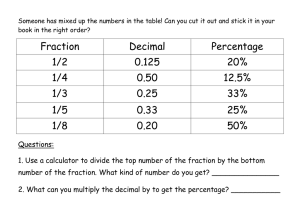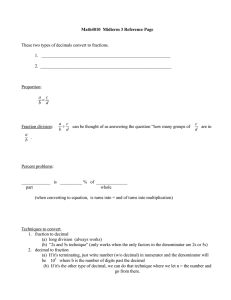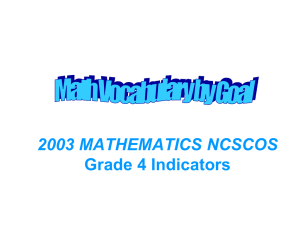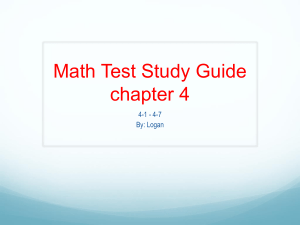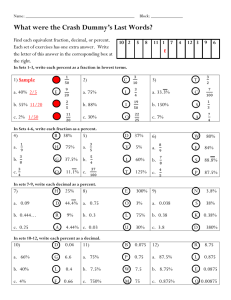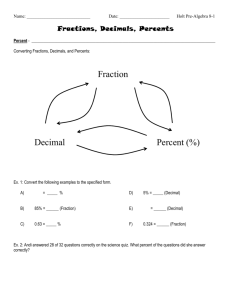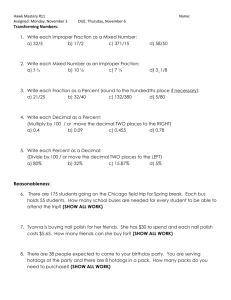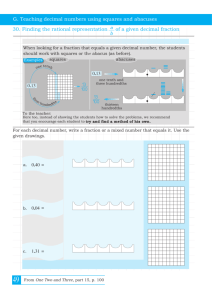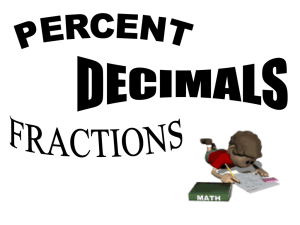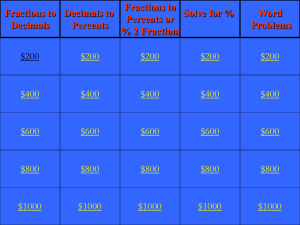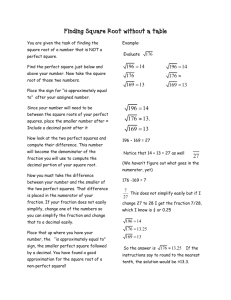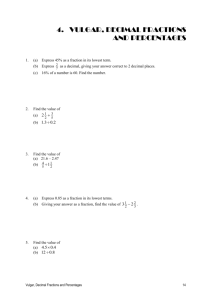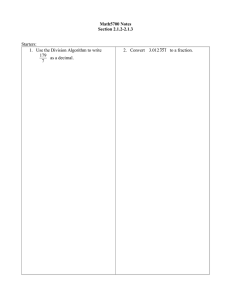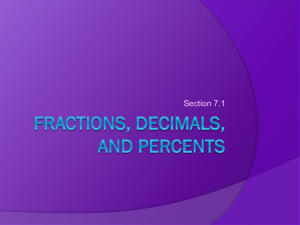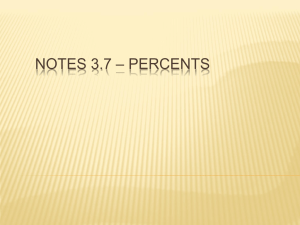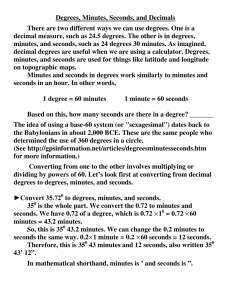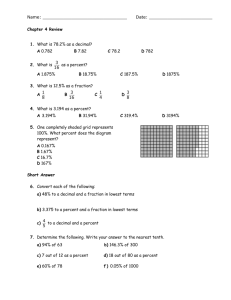The square root of 2
advertisement
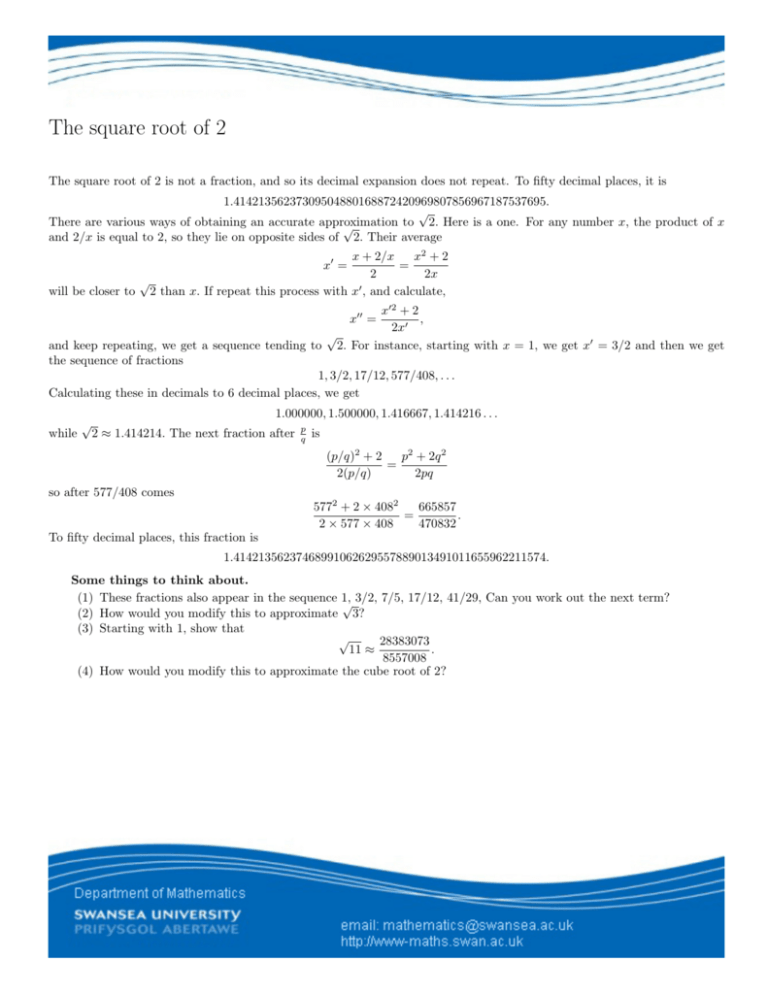
The square root of 2 The square root of 2 is not a fraction, and so its decimal expansion does not repeat. To fifty decimal places, it is 1.41421356237309504880168872420969807856967187537695. √ There are various ways of obtaining an accurate approximation to 2. Here is a one. For any number x, the product of x √ and 2/x is equal to 2, so they lie on opposite sides of 2. Their average x2 + 2 x + 2/x = 2 2x √ will be closer to 2 than x. If repeat this process with x0 , and calculate, x0 = x02 + 2 , 2x0 √ and keep repeating, we get a sequence tending to 2. For instance, starting with x = 1, we get x0 = 3/2 and then we get the sequence of fractions 1, 3/2, 17/12, 577/408, . . . Calculating these in decimals to 6 decimal places, we get x00 = while √ 1.000000, 1.500000, 1.416667, 1.414216 . . . 2 ≈ 1.414214. The next fraction after p q is p2 + 2q 2 (p/q)2 + 2 = 2(p/q) 2pq so after 577/408 comes 665857 5772 + 2 × 4082 = . 2 × 577 × 408 470832 To fifty decimal places, this fraction is 1.41421356237468991062629557889013491011655962211574. Some things to think about. (1) These fractions also appear in the sequence 1, √ 3/2, 7/5, 17/12, 41/29, Can you work out the next term? (2) How would you modify this to approximate 3? (3) Starting with 1, show that √ 28383073 11 ≈ . 8557008 (4) How would you modify this to approximate the cube root of 2?


